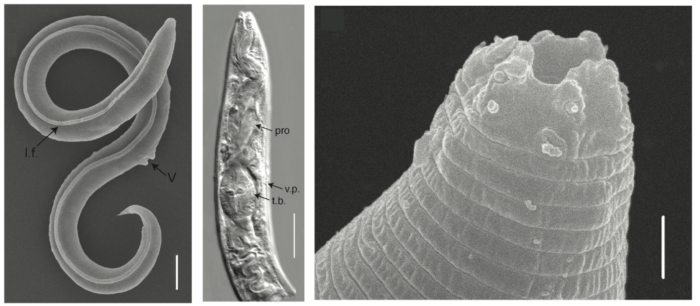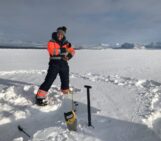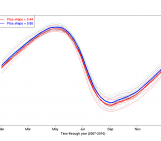
Lately permafrost makes the news more and more because of its enormous carbon stocks and its vulnerability to climate change. While permafrost greenhouse gas budget calculations are complex and harbour an ever-growing research community, its microbial ecology is still on the rise. A recent star are tiny roundworms that survived frozen in permafrost for 46’000 years. Take a short dip into this new and exciting research by Shatilovich and colleagues.
You might have read our last blog post on permafrost microbes, and how they survive for thousands of years. For prokaryotes, like bacteria and archaea, this comes rather easy, they simply form resting cells, cysts and other “high stress” adaptations. Have you ever curled up into a fetal position after a really stressful day? You have just turned into a resting cell. This successfully decreased your surface area and how much external stress can affect you. But generally, for the more complex eukaryotic organisms – animals like you and me, but also plants, fungi and protists – the low temperatures, high salinity and ground radiation, might seem just too much to survive. But Anastasia Shatilovich and her colleagues found exactly that in permafrost of the Kolyma River region (Fig. 2).

Fig. 2 The Siberian permafrost sampling site located in the Kolyma River Region (adapted from Shatilovich et al. 2023).
Within 46’000-year-old Siberian permafrost (one of the deepest and most extensive ones on Earth) at 40m depth below the surface, they found several viable eukaryotic soil microorganisms. In this week’s highlighter paper, Shatilovich and colleagues (2023) investigated how it is possible that a nematode (a tiny roundworm, Fig. 1) could survive at such depth and temperature for so long – in a state called cryptobiosis. This mechanism, just like hibernation, is a dormancy state in which organisms level down their organismal functions to the bare minimum in order to survive intense stress periods. Not only did the newly discovered species Panagrolaimus kolymaensis survive, but it also became active again and could be observed microscopically and used for laboratory stress experiments. Other organisms have been found surviving in permafrost with quests of varying success to revive or cultivate them, including rotifers, plants, some viruses and wooly mammoths.
While resurrecting organisms tickles our interest curiously, this publication is also catching global attention, because permafrost organisms can be used as a proxy for exobiology – life in space or other planets (Rivkina et al. 2018). The conditions, with low water availability, low temperatures and immense pressure, are more similar to other planetary systems than you would expect. A rather famous example for a cryptobiotic organism used in this context are tardigrades (also called water bears or moss piglets).
Why do these worms matter to you? They are part of a complex soil foodweb, in which bacteria-feeding taxa like these nematodes Shatilovich and colleagues found, could control all those fast-growing and greenhouse-gas-releasing bacteria in thawing permafrost. I highlighted this paper for its exciting findings but also for its interdisciplinary potential of connecting the dots between ecology and biochemistry in order to understand the vulnerability of permafrost soils better.
So let’s stay curious and collaborate more!
Further reading
- “A frozen Zoo”, the publication on more eukaryotes discovered in the same samples
- A great post on some examples of cryptobiosis and where you might even know it from (yes the yeast you bake bread with!)
- Permafrost soils are a star in our blog, not only since we have an all-permafrost chief editorial board. You can enjoy some of our former blogs about it under the #permafrost hashtag in our blog.
edited by Lina Madaj
 Maria Scheel is a Postdoc at Aarhus University in Denmark, working in the Netherlands. During her PhD, her research explored how permafrost microorganisms adapt to the ongoing thaw and erosion in Northeast Greenland permafrost. She uses genetic tools to discover how Arctic life responds to climate change related stressors. She is also one of our chief editors and is happy to get back at you via maria.scheel@envs.au.dk.
Maria Scheel is a Postdoc at Aarhus University in Denmark, working in the Netherlands. During her PhD, her research explored how permafrost microorganisms adapt to the ongoing thaw and erosion in Northeast Greenland permafrost. She uses genetic tools to discover how Arctic life responds to climate change related stressors. She is also one of our chief editors and is happy to get back at you via maria.scheel@envs.au.dk.




